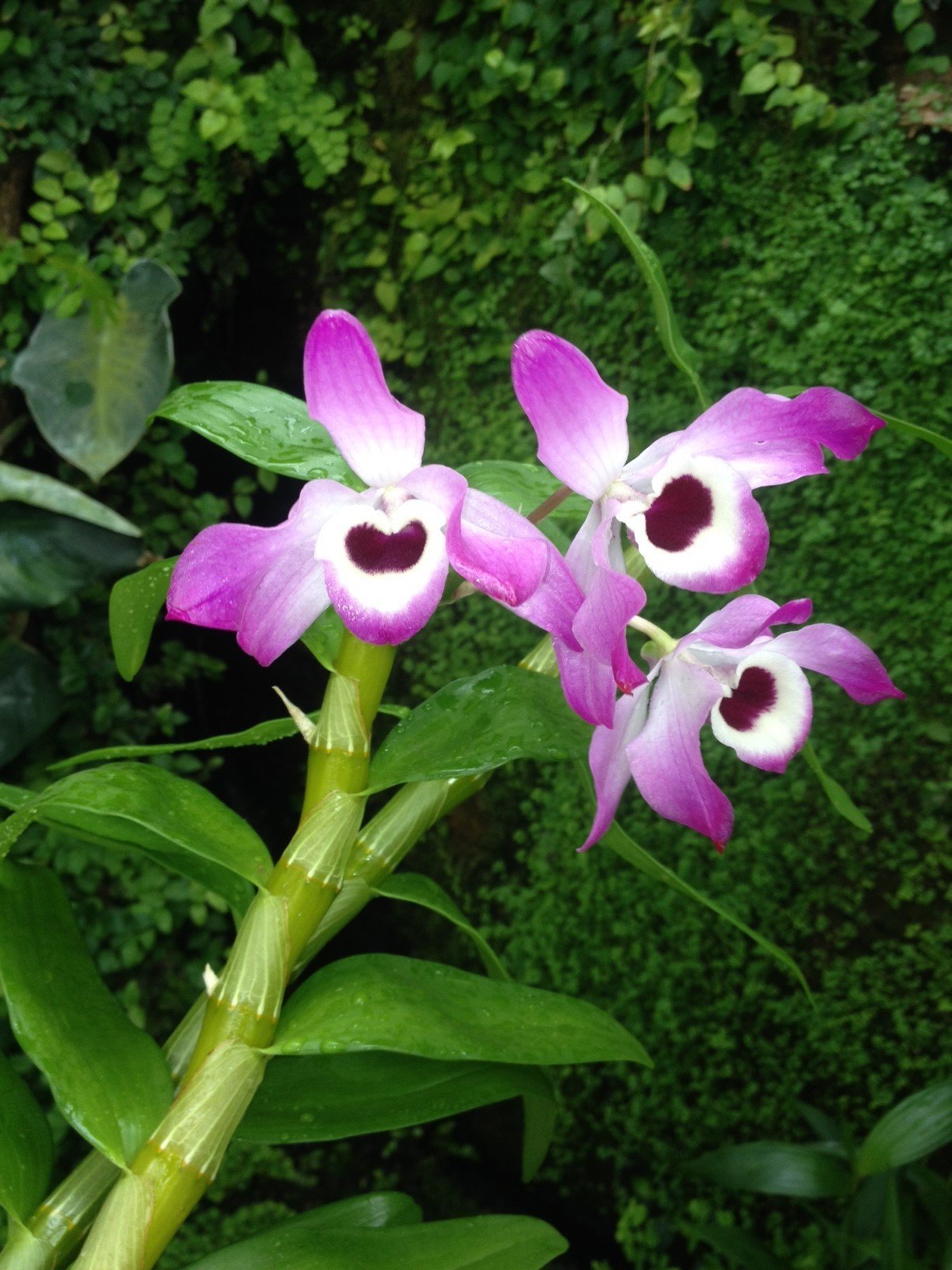Origin
The Dendrobium nobile is one of the most famous and popular orchids in the world. The plant has been the basis of countless extraordinary hybrids. This orchid was first described in 1830 and flowered a few years later at Liddiges' nursery in Hackney, England. The orchid is native to Southeast Asia, where the nobile grows at altitudes of about 1,500 meters above sea level.
Characteristics
The pseudobulbs are thin and long, sometimes reaching nearly 1 meter. The leaves grow alternately left and right, with a short stalk with 2-3 flowers appearing on the matured perennial bulbs opposite the leaf in spring. The flowers are about 5 centimeters across and have a white lip with a dark purple spot in the throat. At the front, the flowers have a pale yellow margin.
Color variations of the flower
Nevertheless, color deviations frequently occur in varieties of Dendrobium nobile, such as white versions or completely dark pink flowers. This can be due to both the temperature and the amount of natural light the plant receives, as well as the origin of the plant.
Care
Climate in the growing period
The plant likes to stand in temperate climate during the growing period between April and October. The Dendrobium nobile needs a lot of indirect light (no direct light!) and can tolerate heat fairly easily on hot summer days.
When and how to repot
As soon as the young shoot has appeared on the old bulb in spring, it can be repotted. For the substrate, use material with extremely good drainage. Pure fern root or pine bark, for example, can be used for this purpose.
Watering and feeding
It is important to give little water during the period when the 4-centimeter long young shoot has not yet made sufficient roots. This shoot is somewhat prone to rot if left wet for too long. When roots are plentiful and growth is vigorous, the plant can tolerate much more moisture and orchid nutrition can be given in liquid form about every 14 days. When autumn has arrived and the bulb is almost mature, you can begin to give less water. Then the plant can be put away dry in November in a light, cool place.
Stimulate flowering
During this period, the bulb matures well and usually buds appear by late February, early March. Watering should be carefully built up during this period. Keeping the plant drier and cooler during the winter period will make flowering more spectacular. If too much water is given during the winter period (too well cared for), keikis (small new plants) are more likely to appear where flowers should have actually appeared. So it is important to lovingly neglect this plant.
Beginner plant
As you have read above, you do not need to have a greenhouse to keep and flower this plant. Moreover, it is a fairly easy plant for the beginner. The plant requires little maintenance and is also suitable for the beginner orchid lover.

